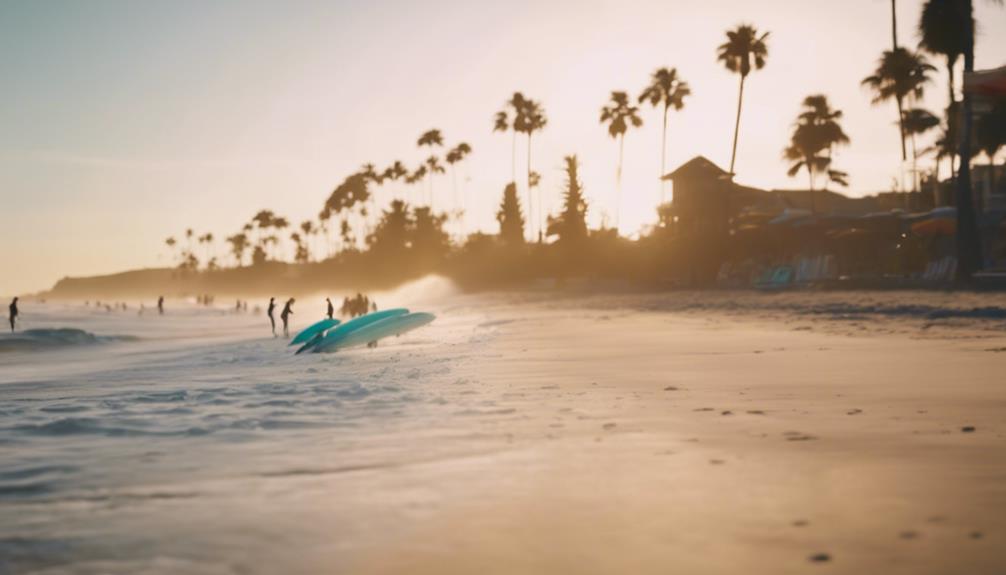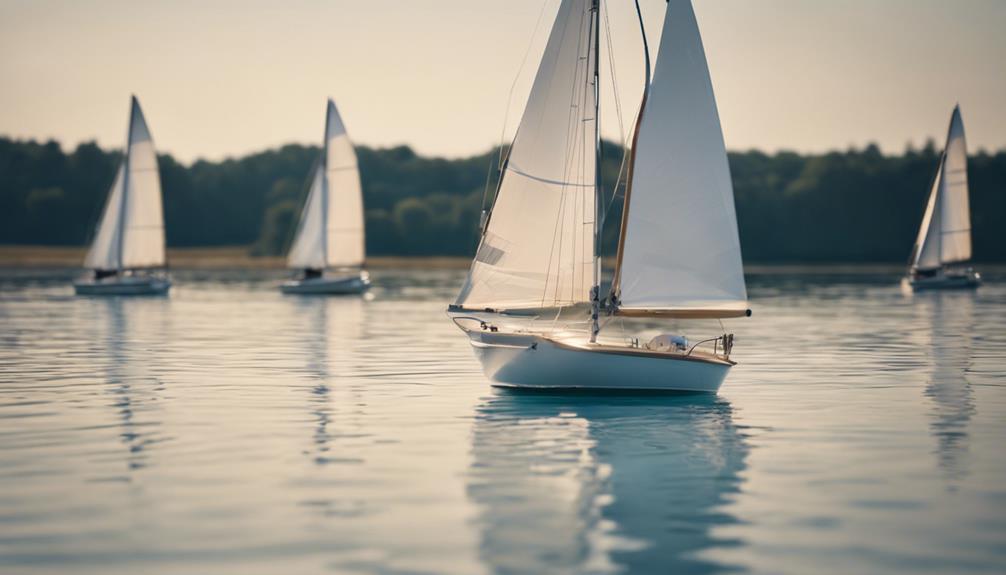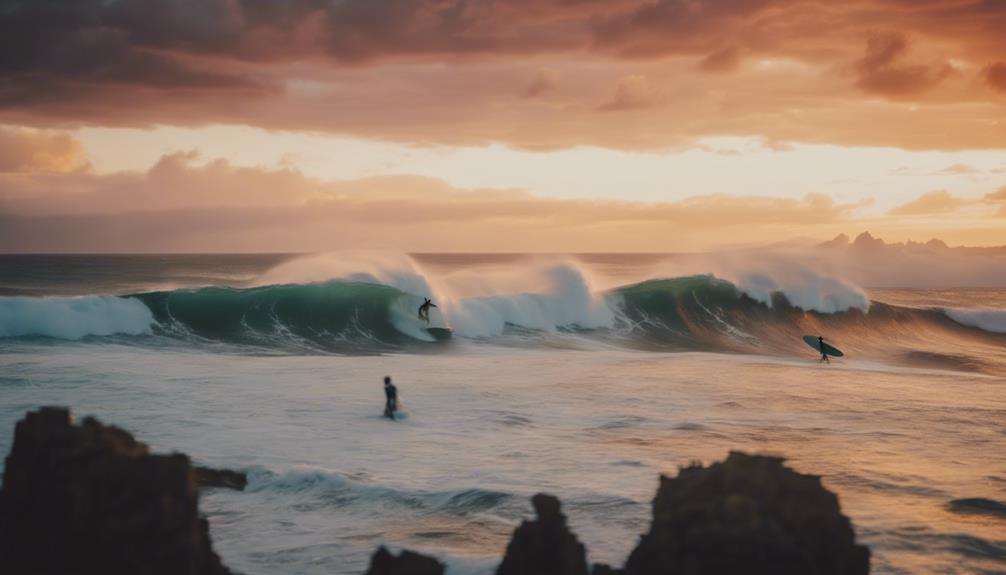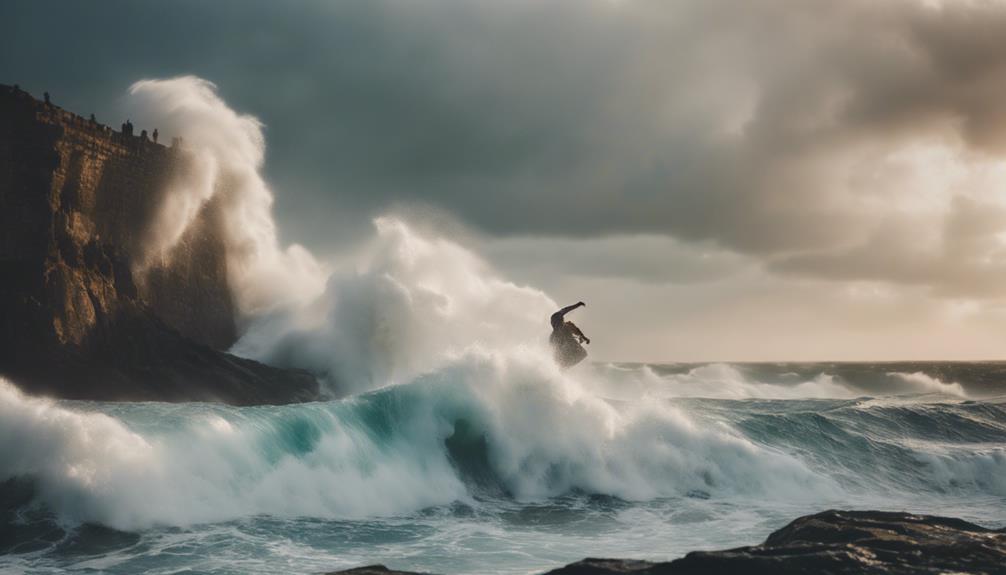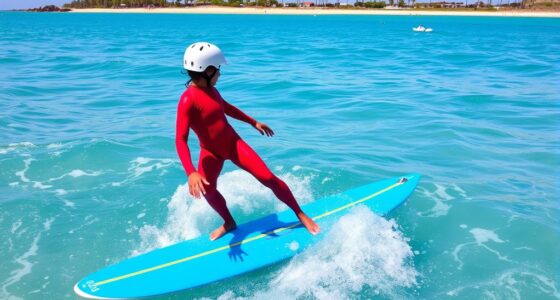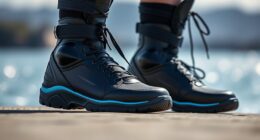To catch the best waves, you need to look for clean breaks that peel consistently in one direction. Ideal wave height varies by skill level; beginners often prefer smaller waves, while advanced surfers seek larger A-frames. For ideal conditions, surf during the morning when offshore winds create smoother, glassy surfaces. Pay attention to wave patterns and avoid closeouts by positioning yourself correctly. Familiarize yourself with local geography and tides, as they can greatly influence wave quality. There's so much more to discover about finding and riding those perfect swells.
Key Takeaways
- Ideal waves feature clean breaks, smooth surfaces, and consistent peeling to enhance rideability and enjoyment for surfers of all skill levels.
- Offshore winds create optimal conditions by smoothing the water's surface, while onshore winds lead to choppy and unfavorable waves.
- Morning sessions generally offer the best wave conditions due to calmer winds, better visibility, and less crowding, allowing for a more enjoyable experience.
- Beach breaks provide varied wave shapes suitable for beginners, while reef breaks offer powerful, longer waves ideal for more experienced surfers.
Characteristics of Ideal Waves
Ideal waves have distinct characteristics that make them perfect for surfing, including a clean break and a smooth, glassy surface. When you're out there searching for those ideal waves, look for ones that break consistently and peel down the line. This allows you to maintain speed and control throughout your ride. A smooth surface is essential, often enhanced by light offshore winds that minimize chop and turbulence, giving you that pristine experience.
The size of ideal waves varies based on your skill level. If you're a beginner, smaller, slower waves will be more manageable, while advanced surfers often seek larger, hollow A-frames for a thrilling challenge. You'll notice that ideal waves typically break in one direction, reducing the chance of closeouts and providing longer rides.
The best time to catch these perfect waves is usually in the morning when offshore winds are prevalent. This not only creates the cleanest conditions but also contributes to the overall enjoyment of your surfing session. Pay attention to these characteristics, and you'll be well on your way to finding those perfect surfing waves!
Wind Effects on Surfing
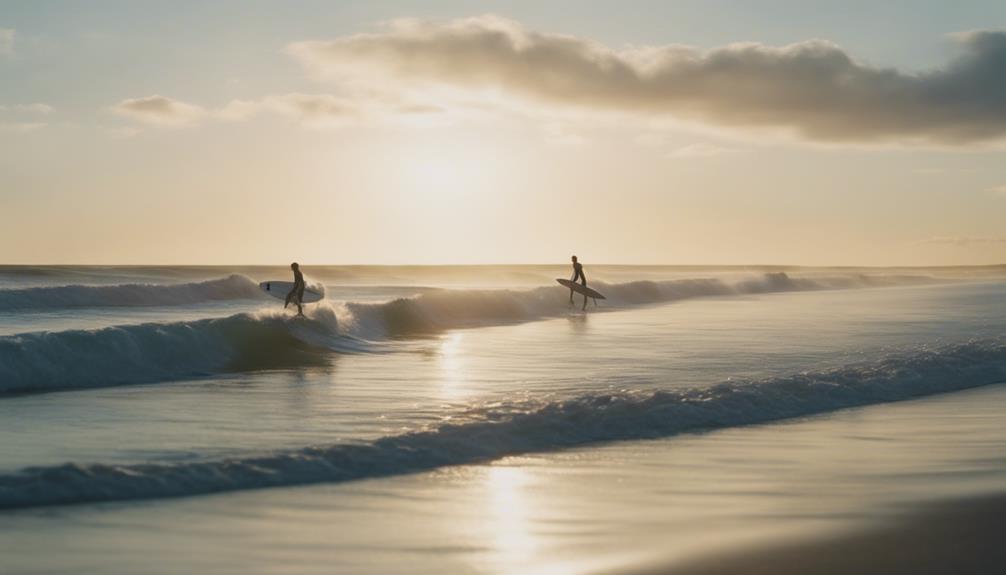
Wind plays an essential role in determining the quality of your surfing experience, affecting everything from wave shape to overall rideability. Understanding how wind interacts with waves can help you catch good waves and enhance your session.
Here are three key wind effects to keep in mind:
- Offshore Winds: These winds blow from the land towards the sea, creating smoother, glassy surfaces. This results in ideal surf conditions, allowing you to ride cleaner waves with better shape.
- Onshore Winds: When winds blow from the sea to the land, they can lead to choppy waters and blown-out tops on waves. Avoid these conditions, as they can ruin your surfing experience.
- Wind Speed: Higher wind speeds can create rougher surf, while lighter winds, especially during early morning, typically provide the best surfing conditions. Pay attention to wind patterns to maximize your time in the water.
Techniques for Wave Selection
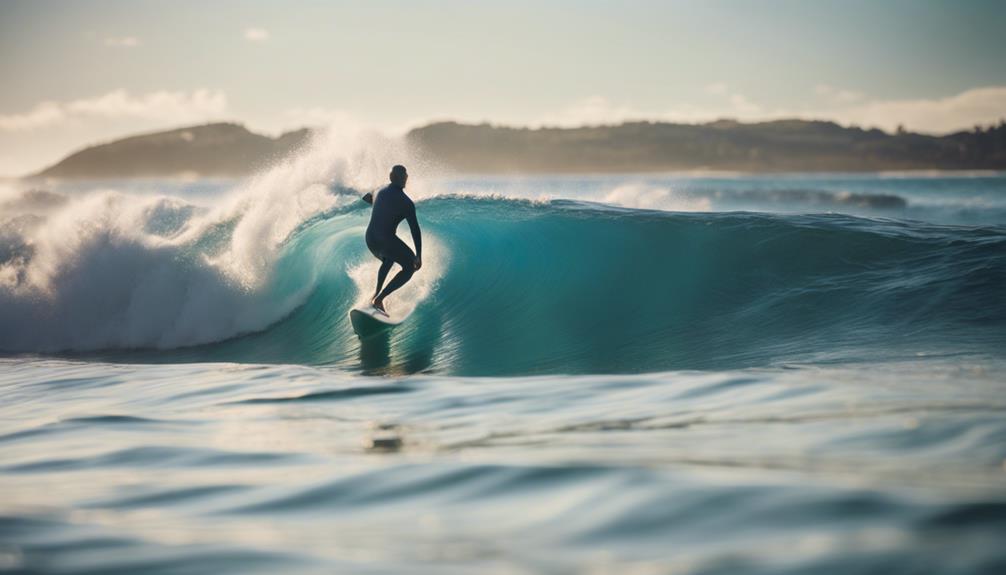
Mastering wave selection is vital for consistently catching good waves and enhancing your overall surfing experience. To start, position yourself with a landmark, like a palm tree, to align your takeoff spot with incoming waves. This helps improve your wave selection and guarantees you're ready to catch waves at the right moment.
Next, keep an eye on the horizon for larger waves, as they often present better opportunities for rides compared to smaller ones. Count the previous waves in a set to predict the timing of the next ones, which allows you to strategically position yourself. Experienced surfers know how important this is; timing can make all the difference.
Avoid areas where closeouts occur, as these waves break simultaneously and won't offer a good ride. Instead, look for diagonal swells, which indicate the potential for peeling waves.
These waves generally provide longer and more enjoyable rides, increasing your chances to catch waves effectively. By applying these techniques, you'll improve your wave selection and, ultimately, your surfing performance at your favorite surf spot.
Best Surfing Practices
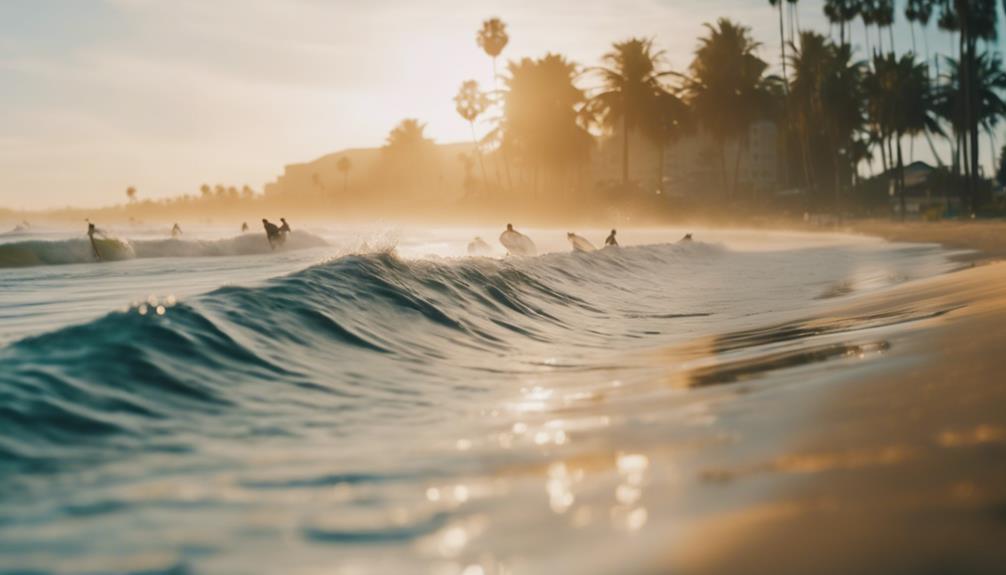
To make the most of your surfing experience, you should aim for morning sessions when conditions are typically at their best.
Understanding the importance of offshore winds can greatly enhance the quality of the waves you ride.
Plus, mastering wave reading techniques will help you catch those perfect swells with ease.
Morning Surfing Benefits
Morning surfing often delivers the best wave conditions, thanks to calm offshore winds that create smooth, glassy surfaces perfect for riding. If you're looking to enhance your surfing experience, consider these morning surfing benefits:
- Reduced Chop: The lack of wind in the early hours means less chop on the water's surface, making it easier for you to catch and ride waves.
- Clear Visibility: Morning light provides better visibility, allowing you to see incoming sets more clearly, which aids in your wave selection.
- Less Crowding: Surfing in the morning helps you avoid the crowds that gather later in the day, giving you a more focused and enjoyable session.
With well-defined swells often present in the morning, you'll experience enhanced overall enjoyment while surfing.
Plus, the tranquility of early sessions can help you connect with nature and improve your skills without distractions.
Offshore Wind Importance
Understanding the importance of offshore winds can greatly enhance your surfing experience by providing the ideal conditions for riding clean, smooth waves. Offshore winds create a glassy surface on the water, greatly improving ride quality. When these winds blow, they reduce wave chop, allowing you to maintain better speed and control as you navigate the pocket of the wave.
To catch the best surf conditions, aim to hit the water during the early morning when offshore winds are often at their peak. This timing gives you the best chance to ride clean waves without the interference of onshore winds that can lead to blown-out tops and rough waters.
Recognizing wind direction is essential for maximizing your surfing sessions. By keeping an eye on the local wind patterns, you can plan your outings to coincide with favorable conditions.
If you want to guarantee a thrilling ride and enjoy the ocean's beauty, prioritize surfing during offshore wind conditions. Doing so will elevate your overall experience, allowing you to focus on the joy of riding those perfect waves.
Wave Reading Techniques
Mastering wave reading techniques is key to maximizing your surfing experience, especially after you've learned how offshore winds can enhance wave quality.
By honing your skills, you'll improve your ideal wave selection and enjoy longer rides on those perfect peeling waves. Here are three essential tips to help you read the waves better:
- Use Landmarks: Position yourself near a landmark, like a palm tree, to align your spot for ideal wave selection. This helps you catch the best breaking waves consistently.
- Observe Incoming Sets: Keep an eye on the horizon for larger waves and count the previous sets. This will help you predict when the next wave will arrive, allowing for better timing when paddling.
- Identify Wave Types: Look for diagonal swells that indicate potential peeling waves. Avoid closeouts, where waves break all at once, as they offer no rideable sections and increase your risk of wipeouts.
Always analyze the wind conditions, as favorable offshore winds can greatly improve wave quality, making for a more enjoyable surfing experience.
Types of Surfing Waves

When you hit the waves, understanding the different types can really enhance your experience.
Beach breaks are perfect for beginners, offering a variety of shapes and conditions.
In contrast, reef breaks provide more challenging, powerful rides for the experienced.
Knowing these characteristics can help you choose the right spot for your skill level and goals.
Beach Break Characteristics
Beach breaks offer a unique surfing experience, with waves that break over sandy bottoms, making them perfect for beginner surfers and seasoned surfers alike. The soft landing provided by sandy bottoms makes these breaks ideal for novices, allowing you to practice without the fear of rocky hazards.
Here are three characteristics of beach breaks that you should know:
- Varied Wave Quality: Depending on time of day, tide levels, and seasonal changes, beach break waves can differ greatly. You might find yourself riding long, gentle waves one day and powerful hollow waves the next.
- Crumbly Waves: Often referred to as 'crumbly waves', these less steep and gentler waves peel nicely, providing a safer environment for beginner surfers to hone their skills and gain confidence.
- Influence of Local Conditions: Local weather patterns and shifting sandbars can profoundly impact the consistency and quality of beach breaks. Staying aware of these changes will help you catch the best waves.
Embrace the versatility of beach breaks, and enjoy the thrill of surfing in a welcoming environment!
Reef Break Advantages
Reef breaks offer surfers the thrill of powerful, predictable waves that can elevate your riding experience to new heights. These waves typically break over rocky bottoms, which means you'll enjoy a consistent seabed that enhances your paddling routes. Unlike beach breaks, which can shift with the tide and sand movement, reef breaks maintain their form, providing reliable surf conditions.
One of the greatest advantages of reef breaks is the quality of the waves they produce. You can expect longer, peeling waves that allow for extended rides, challenging you to improve your skills and experience powerful rides. These features make reef breaks more suitable for experienced surfers who are comfortable maneuvering through the risks associated with rocky environments.
Popular reef break locations, like those in Hawaii, Australia, and California, attract surfers seeking quality waves that can deliver an exhilarating experience. While they present challenges, the rewards of surfing reef breaks are undeniable. If you're looking to push your limits and catch some unforgettable waves, seeking out reef breaks might just be the perfect choice for your next surfing adventure.
Understanding Wave Mechanics
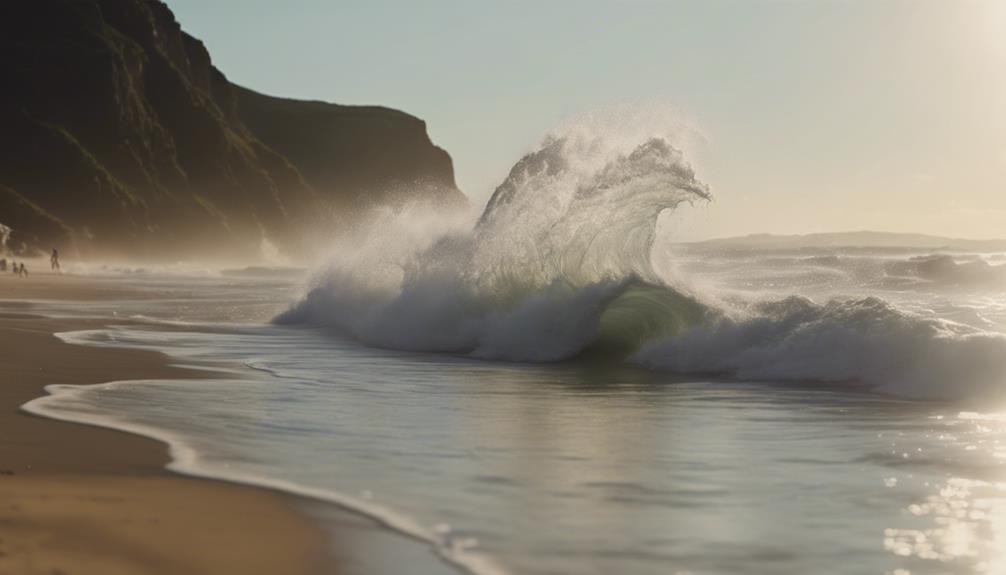
Waves form as wind transfers energy to the water's surface, creating ripples that can develop into larger swells depending on various factors. Understanding wave mechanics is essential for surfers seeking the best conditions.
Here are three important elements that affect wave quality:
- Wind Speed and Duration: Stronger winds blowing for longer periods generate bigger swells.
- Fetch Distance: The distance over which the wind blows across the water directly influences wave size and consistency.
- Ocean Floor's Topography: Different types of waves, like beach breaks, point breaks, and reef breaks, are shaped by the underwater landscape. The ocean floor's contours determine how and where waves break, impacting their surfability.
Swell quality is another significant factor. Waves that travel longer distances from their storm origins tend to be smoother and more consistent.
Ideally, you want a wave with a clean break and a predictable direction, as this allows you to ride along the wave face without getting caught in chaotic closeouts.
Local Influences on Surf Conditions
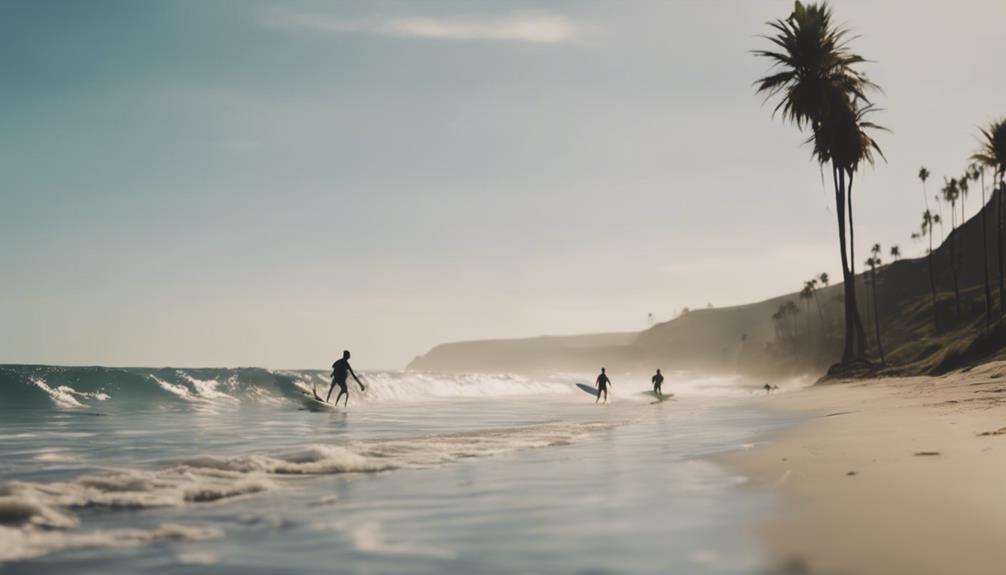
Understanding local influences can dramatically enhance your surfing experience, as various geographic and atmospheric factors play a fundamental role in shaping surf conditions.
The geography of a surf spot, including its underwater features and coastal structures, can greatly affect wave quality. For instance, certain formations may enhance or diminish wave breaks, which is essential for evaluating the surf on any given day.
Local weather patterns, particularly high and low pressure systems, can change wind conditions and, consequently, the size and shape of incoming swells.
You'll find that tidal movements are equally important; high and low tides can either improve or reduce wave performance based on the specific beach break you're surfing.
Additionally, seasonal patterns influence the frequency and quality of surfable waves throughout the year. Storm activity and prevailing wind directions can create favorable conditions during certain seasons.
Surf Condition Forecasting
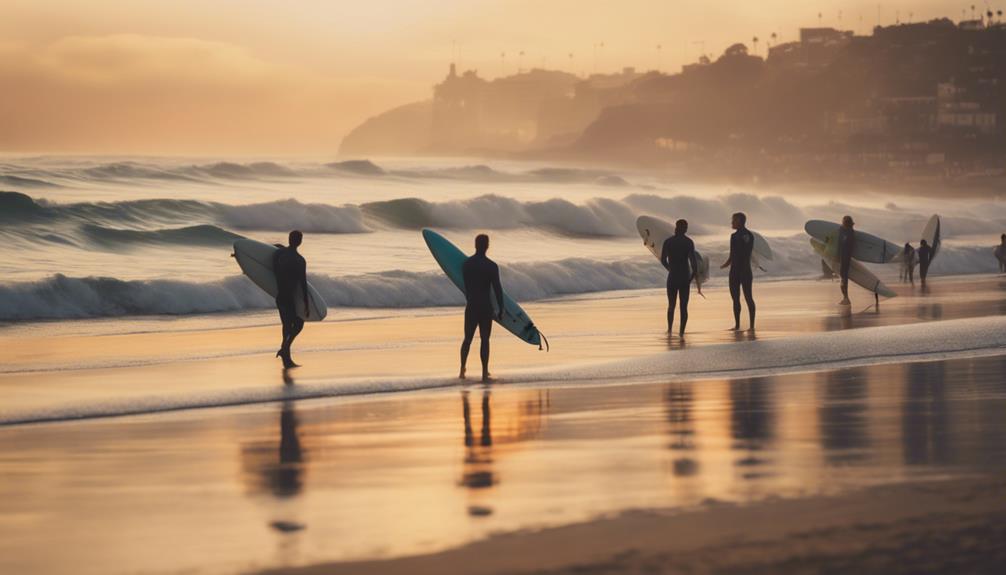
Forecasting surf conditions involves analyzing various environmental factors that directly influence wave quality and size. Understanding swell generation is key to predicting the best waves.
Here are three critical elements you should consider:
- Wind Speed: Higher wind speeds can create choppy water, while lighter winds often produce cleaner waves. Monitor local conditions to find the ideal wind patterns.
- Swell Generation: Pay attention to low-pressure systems, as they foster swell creation. High-pressure systems might lead to flat spells, so timing your sessions around these changes is essential.
- Surf Reports: Regularly check surf reports and charts. They provide valuable insights into wave conditions, including height and period, based on real-time data from buoys and satellite imagery.
Engaging With the Surf Community

Engaging with the surf community can greatly enhance your experience and knowledge, as you'll discover valuable insights from fellow surfers. Whether you're taking a surf lesson or looking to learn to surf, connecting with others can provide essential tips on local surf conditions. Experienced surfers often share their favorite spots and prime times for catching good waves, making your outings more fruitful.
Participating in community forums is another great way to broaden your surfing knowledge. You'll find discussions about new techniques, gear recommendations, and upcoming events that can elevate your skills and experience. Attending local surf competitions not only showcases talented surfers but also gives you a chance to learn by watching their techniques and wave selection strategies.
Furthermore, volunteering for beach clean-ups fosters camaraderie and promotes environmental awareness. This connection can lead to surf trips with fellow surfers, enriching your surfing journey through shared experiences and insights.
Frequently Asked Questions
What Are the Best Waves to Surf On?
To find the best waves to surf on, look for smooth, consistent breaks with a height suited to your skill level. Pay attention to swells and wind conditions, as they greatly affect ride quality.
How to Know if a Wave Is Good for Surfing?
To know if a wave's good for surfing, watch for clean breaks and swells. Check the wind direction and tide levels, avoiding closeouts. Assess the wave's shape and direction for best riding opportunities.
How Do You Catch Waves Better Surfing?
To catch waves better, position yourself near a landmark for timing, count waves to anticipate, paddle with deep strokes for speed, and pop up quickly with the wave's momentum, focusing on broken waves initially.
Which Waves Do Surfers Prefer and Why?
“Good things come to those who wait.” You prefer clean, consistent waves that break in one direction. Light offshore winds create smooth surfaces, while hollow A-frames and long-peeling point breaks offer thrilling rides for advanced surfers.
What Are the Characteristics of Good Surfing Waves and How Can I Identify Them While Surf Spot Hunting?
When searching for the perfect surfing spot, it’s crucial to know how to find good surfing waves. Look for waves with a clean, consistent shape that break evenly along the coastline. Avoid crowded areas and seek out breaks with minimal wind interference. Pay attention to local tide and swell patterns for prime surfing conditions.
Conclusion
As you chase the perfect wave, remember that every swell tells a story, much like Odysseus traversing the seas.
By understanding wave mechanics and local conditions, you'll enhance your surfing experience and find those ideal waves.
Embrace the thrill, connect with fellow surfers, and let the ocean's rhythm guide you.
Ultimately, it's not just about catching waves—it's about the journey and camaraderie that comes with it.
So gear up and ride the tide!

